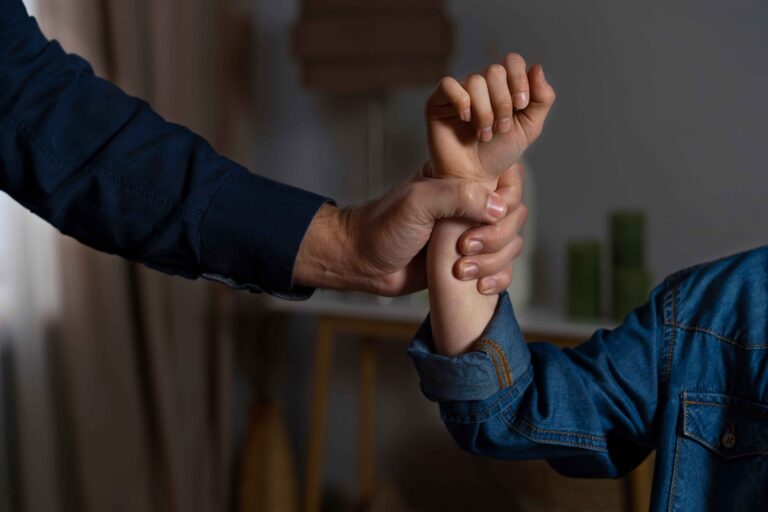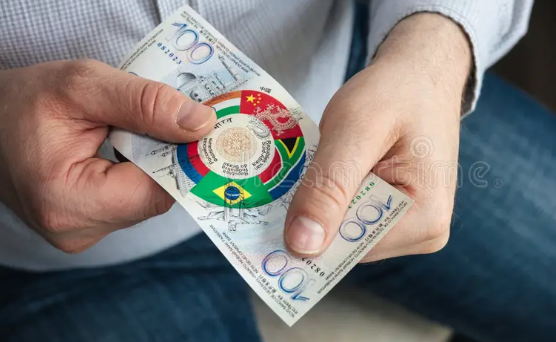Empowering Survivors: Understanding Your Legal Rights Against Domestic Violence

Domestic violence
In India approximately 30% of married women experience domestic violence, domestic violence an abusive practice that thrives in silence, shrouded in shame and fear. Victims are often isolated by their abusers, made to feel that they are responsible for the violence or that no one will help.
Domestic violence means the repetition of assaults on any partner in a relationship to establish or exercise authority over the other partner. It refers to any physical, sexual, emotional, economical or psychological violence that may be carried out on an individual. This violence is not racially selective and can be perpetrated by anyone of any race, age, sexual orientation, religion or gender and can happen to people in heterosexual and homosexual relationships.
The nature of domestic violence is as follows; this is an inevitable ill that has affected millions of people around the world. From the WHO, latest statistics show that one out of every three women in the world have been subjected to either physical or sexual violence by an affectionate partner or a non-partner at some point in their lives. Thus, domestic violence affects the victims on a rather significant level and causes long term physical, mental and even emotional disorders. It also has social and economical impacts such as high costs of health care facilities, reduction in productivity and pressure on the available resources within the society.
Domestic violence causes a ripple effect on one’s close ones and the side effects extend further beyond one’s partner and affect society as a whole and daily interactions between people. Later in their lives children exposed to domestic violence are more likely to develop mental health issues, and abuse substances as well as engage in acts of violence.
In this article we aim to let readers know about an important social problem of domestic violence, to reveal the signs of this problem and its impact, and to make people act in a way that can assist in preventing this problem. The society can combat it by enhancing people’s awareness of the issue through education to ensure it is not tolerated within societies.
What is Domestic Violence?
Domestic violence is where a partner uses force in exercising control and dominance over the other in a relationship. This abuse can manifest in various forms, including:
Physical Abuse: This consists of retaliation through using one’s hands, feet, fists, nails, objects or in any manner that results in causing harm to the other partner physically.
Emotional Abuse: Pertains to the psychological abuse of an individual to degrade him/her by using verbal assaults and undermining their relationships with other people.
Sexual Abuse: Any sexual activity even within marriage without consent or any physical efforts to force the targeted person to have sexual activity.
Financial Abuse: This is the prevention or limited regulation of a person’s access to, management or sustenance of money. This can range anywhere from stopping a person from gaining employment or obtaining their or family benefits.
Psychological Abuse: It comprises the use of force through threats of bodily harm; threatening to harm oneself, the partner, children, or partner’s relatives/friends; damaging pets and other belonging; and locking the partner and children out of their circle of family and friends or preventing the partner from attending school or work.

Who Can Be A Victim?
The image of domestic violence often conjures a specific scenario: a woman caught up in a case of domestic violence. This is unfortunately a rather familiar story, and it must be emphasized that this stereotype should not be reinforced immediately. Domestic violence can happen to anyone.
Gender: Male victims are also likely to suffer from Domestic Abuse as compared to the female. Despite the differences in how the violence is initiated; there are clear trends showing even men suffer intimate partner violence at some point in their lives.
Age: Domestic violence does not recognize age. It can be experienced in adolescent dating relationships, couples in their first or second, or even third or fourth marriage, or in elderly people.
Socioeconomic Background: It also found that there is no immunity to abuse regardless of the woman’s status in terms of wealth and level of education. Regardless of the victim’s income or education level, domestic violence seems to be rife in many households.
Sexual Orientation: Some instances show that gay, lesbian, bi-sexual, transsexual, and queer individuals are not exempt from domestic violence. Indeed, it was found that they can appear to have even more difficulties related particularly to social prejudice and the non-existence them of specialized counseling services.
The nature of domestic violence is not inherent in the victim’s gender or any other characteristics, it lies in the perpetrator’s behavior.
Common Indication of Domestic Violence
Awareness is the first step towards intervention hence the need to identify instances of domestic violence. It is a social evil that affects mostly females and children; The manifestations of domestic violence are as follows:
- Physical harm that cannot be easily accounted for or recurrent trips to the doctors.
- Mood swings / abnormal episodes / abnormal behavior / personality disturbance.
- Recent change of behavior namely, avoiding friends and families and giving up on certain activities.
- Researchers have discovered that features such as anxiety, depression, or suicidal thoughts are prominent in video gamers.
- Physical or sexual abuse in childhood, being stalked, trafficking, financial dependency or other forms of bizarre financial behavior.
- Subjects that include living; fear of one’s partner being jealous or possessive and controlling or constantly seeking guarantees that one outputs appropriate behavior.
- Fearing statements made to a partner.
The Victim’s Silence: A Breeding Ground for Abuse
The Weight of Shame and Fear
Shame and fear are typical among victims, these are tools to control their thoughts and actions by an abusive partner. The victims start to blame themselves for their own misfortunes, while the fear confines him/her within a cycle of control which restricts them from asking out for help.
The Myth of the “Perfect Victim”: Society only chooses to recognize women who have been physically abused but ignores those that suffer emotionally or financially. It is this misunderstanding that invalidates their experiences making it hard for them to get assistance or be recognized by society.
The Underreporting Epidemic: Often the incidents go unnoticed, with domestic violence being significantly underreported; a study reports that just about 34% of DV cases are reported. This leads to keeping some issues in secret hence leading to suffering in silence thus the vicious circle goes on.
Breaking the Silence
Bringing down domestic violence requires breaking the silence:
Public Awareness Campaigns: Stereotypes can be challenged and help-seeking behaviors encouraged.
Shifting the Narrative: Domestic violence affects all people regardless of background.
Supporting Survivors: Encourage victims to disclose their experiences safely
The Impact of Domestic Violence
Recent global estimates indicate that over a quarter of women who have ever been in a relationship have experienced physical, sexual, or both forms of intimate partner violence (IPV), with rates particularly high at approximately 35% in South Asia. In India, a significant 32% of ever-married women have reported experiencing physical, sexual, or emotional violence from their husbands during their lifetimes. Physical abuse is the most prevalent form of domestic violence affecting 28% of women, followed by emotional abuse at 14%, and sexual violence at 6%. Although a recent nationwide survey shows a slight decrease in combined physical and sexual violence rates from 31% to 29% over five years, the magnitude of these issues remains unacceptably high.
Impact on The Victim’s Physical And Mental Health
Domestic violence is a major social problem that causes great physical and psychological health consequences to the sufferers. Some of the physical outcomes in the victims include; cut, injuries, swelling, bruising, bone fractures, backaches, and reproductive health infections such as-, sexually transmitted diseases, multiple pregnancies, and abortion among others. Emotionally, some female victims are likely to develop anxiety, depression, Post-traumatic stress disorder, and suicidal intentions. The realization that they will have to endure this treatment every day makes the person endure sleepless nights, and develop low self-esteem and feelings of hopelessness.
Impact on the Children and Other Family Members:
Domestic violence also has an impact not only on the direct participants – parents, but also on the children and other members of the family indirectly. Abused children suffering from domestic violence develop behavioral issues, academic failure, anxiety, and depression, and developmental issues. Exposure to violence is always dangerous for children because they will grow up and possibly inflict the same on other people. Since such abuse is encouraged and often continued by other family members- the victims get stressed out, anxious and helpless, deteriorating the family relations.
Societal and Economic Costs:
The social and economic impacts of domestic violence are significant. The costs resulting from making and maintaining health care arrangements are for injuries, chronic diseases, and other conditions; which includes emergency room visits, hospitalization, mental and other specialist health care services and follow up care. Such lost productivity ensues from the fact that the victims fail to attend to work due to injuries, legal hearings or events, or emotional shock, which affects remuneration and the general economy. Care services, parenting and criminal justice systems cost money for support services like refuge, counseling, and attorney. The intergenerational effect continues to reproduce social and economic difficulties, children who grow up in abusive families are also likely to become either victims or offenders of Domestic Violence in their lifetime.
Domestic violence is a multifaceted problem that reserves acute social importance and concern due to its influence on individuals, families, and the larger society; this, in turn, requires a corresponding, multi-faceted response based on increasing awareness, improving access to services, pursuing and enforcing the law, and modifying culture.
Laws in India Against Domestic Violence
The Indian government in recognition of the gravity of Domestic Violence has introduced the Protection of Women from Domestic Violence Act 2005 (features of the PWDVA)
Protection of Women from Domestic Violence Act 2005 (PWDVA) is a significant legal provision in protecting women from domestic violence in India. It covers a broad range of abuses apart from physical violence, to encompass verbal, emotional, sexual and economical abuses. Every Indian woman is protected under the act and for that matter ‘domestic relationship’ as envisaged under the act includes marriage, living together or a shared household.
Explanation of Key Provisions
The PWDVA includes several key provisions to safeguard victims:
Protection Orders: Some of the remedies available include protection orders in which the courts may order the abuser not to perpetrate any act of domestic violence on the victim and also put restraining orders against the abuser prohibiting the abuser from entering the victim’s residence.
Residence Orders: The court can also apply for injunctions which may include an order directing that the victim can continue to reside in the shared home or that the abuser must stay away from it.
Monetary Relief: The Act seeks to entitle the victims to be awarded money for medical treatment, loss of income, the injury of the property and all other expenses occasioned by the violence.
Role of the Police and the Judiciary
The police and the judiciary also play a very important part in Domestic Violence cases, it is necessary to understand the importance of their tasks.
The police have a significant role in implementing the PWDVA since they accept cases, investigate, and help the victims in the application of protection orders. Through the judiciary the implementation of the Act is facilitated especially by offering justice and protection to the victims through interim orders as well as final judgment.
Other Related Legislation and Changes
In addition to the PWDVA, other laws contribute to combating domestic violence in India: In addition to the PWDVA, other laws contribute to combating domestic violence in India:
Indian Penal Code (IPC): The IPC includes sections relating to offences of cruelty by husband or by any other relative of the husband, dowry harassment, sexual assault provide legal relief to the victims as a legal remedy section.
Criminal Procedure Code (CrPC): Section 498A of the IPC and provisions under the CrPC empower the police, prosecutors and the courts to deal with cases of dowry and cases that fall under the category of domestic violence.
Amendments and Legal Reforms: Changes in the current laws as well as new legal measures will always progress as a way of enhancing the measures against domestic violence as well as for the compensation of victims.
The legal framework in India protects the victims, penalizes offenders and prevents repetition by having strong legislation along with support and enforcement under PWDVA and its allied laws.
Legal Options Open to a Woman under PWDVA
Filing a Complaint as well as Seeking for Protection
Approach the Court: A victim of domestic violence or their representatives can go to the Magistrate’s Court to lodge this type of complaint.
Provide Details of The Complaint: The case should set out instances of domestic violence, and state the orders for relief that include protection orders, rights to reside with the children, and financial support.
Supporting Evidence: Include documents like doctor’s report, witnesses, among other evidence that can back the complaint against the abuser.
Some of the reliefs include acquisition of Protection Orders, Residence Rights, Financial Reliefs and Other Reliefs.
The Working of Protection Officers and Service Providers
Protection Officers: Counsel the victims to present their complaints and get protection orders in order to protect their freedom from oppression and- rights enforced under the law.
Service Providers: Local NGOs and support groups are involved in counseling, sheltering and providing legal and rehabilitation assistance to help the victims to cope and in legal processes.
Legal Assistance and Adscription
Legal Aid Authorities: At the same time, represent victims who cannot pay for legal help as a way of defending themselves.
NGOs and Support Groups: Provide immense assistance in the form of support and representation till the case is resolved.
With these legal remedies available these women can now assert their rights under the PWDVA in cases of domestic violence and be protected and assisted
The Global Battle Against Domestic Violence: The Role of Laws and Policies
Domestic Violence is a widespread issue affecting millions of people worldwide. While cultural norms and legal systems may differ, the implementation of effective laws and policies plays a crucial role in addressing this problem. Let us take a look at how these frameworks function on a global scale.
International Instruments:
Setting the Bar: International instruments like the Convention on the Elimination of All Forms of Discrimination Against Women (CEDAW) establish legal and social standards for member states to tackle violence against women. India is the member country and accepted CEDAW in year 1993.
Ensuring Accountability: These frameworks hold governments accountable for taking action to prevent and address violence against women, including domestic violence.
Offering Guidance: They guide creating comprehensive legislation, training law enforcement, and offering support services to victims.
National Legislation:
Defining Domestic Violence: Solid national legislation should provide a comprehensive definition of domestic violence, encompassing physical, emotional, sexual, and financial abuse.
Protection Orders: Accessible and effective restraining orders are crucial for safeguarding victims.
Criminal Justice Response: Clear criminal penalties for domestic violence offenses deter perpetrators and demonstrate the gravity of the crime.
Law Enforcement Training: Specialized training for law enforcement officers is essential in effectively handling domestic violence incidents.
Challenges and Gaps:
Implementation: Strong legal frameworks are only effective when fully and fairly implemented. Lack of resources or societal stigma can hinder their effectiveness.
Cultural Context: International standards should be adapted to address cultural nuances and ensure they are culturally sensitive.
Marginalized Groups: Laws and policies may not adequately cater to the needs of marginalized groups who face additional barriers in accessing support.
Conclusion
Domestic violence remains one of the most pervasive human rights violations, impacting individuals and families across all social strata. The efforts to combat this issue must be relentless and multi-dimensional, leveraging legal, societal, and cultural strategies.
Legal Framework as a Foundation
India’s legal framework, highlighted by the Protection of Women from Domestic Violence Act (PWDVA) of 2005, serves as a critical foundation in the fight against domestic abuse. This legislation provides necessary protections and avenues for relief to victims. Yet, the law alone cannot suffice. Effective implementation, backed by trained law enforcement and a responsive judiciary, is vital to ensure these protections translate into real-world safety for survivors.
Raising Awareness and Breaking the Silence
Awareness campaigns are instrumental in breaking the cycle of violence. By educating the public on the signs of domestic abuse and the legal remedies available, we can empower victims to seek help and encourage bystanders to intervene. Awareness must also extend to dispelling myths and stereotypes about domestic violence, recognizing that it affects individuals regardless of gender, age, or socioeconomic status.
Cultural Change and Societal Support
A profound cultural shift is required to address the root causes of domestic violence. This involves promoting gender equality, fostering respectful relationships, and challenging traditional norms that perpetuate abuse. Societal support systems, including shelters, counseling services, and financial assistance, must be strengthened to provide comprehensive support to survivors, helping them rebuild their lives with dignity.
Global Cooperation and Learning
Domestic violence is a global issue, and international cooperation can enhance national efforts. By aligning with international standards such as the Convention on the Elimination of All Forms of Discrimination Against Women (CEDAW), and adopting best practices from other countries, India can refine its strategies and interventions. Global learning and cooperation can lead to innovative solutions and shared progress in the battle against domestic violence.
Empowerment and Future Steps
Empowering survivors is central to addressing domestic violence. This empowerment is derived from knowledge of one’s rights, access to legal and social support, and the assurance of a society that stands against abuse. By fostering an environment that supports victims and holds perpetrators accountable, we pave the way for a safer, more just society.
Final Thoughts
The journey towards eradicating domestic violence is ongoing and requires a concerted effort from all sectors of society. Legal reforms, awareness initiatives, cultural shifts, and robust support systems are all crucial components of this effort. As we continue to advocate for the safety and rights of survivors, we move closer to a future where domestic violence is no longer tolerated, and every individual can live free from fear and abuse. Our collective commitment to justice and support will forge a path towards a more equitable and humane society.



